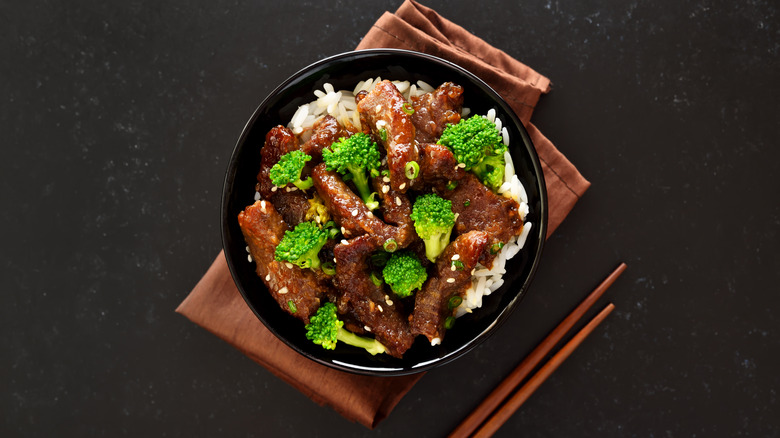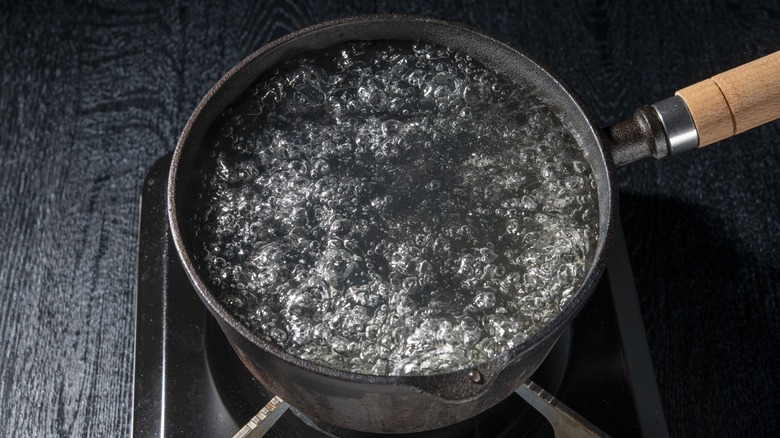What Exactly Is Velveting Your Beef?
Tougher cuts of beef can be difficult to tenderize through cooking alone, which is why you won't typically find recipes for grilled brisket. But it's not all bad news. One exceptional way to get a melt-in-your-mouth texture is called velveting, a staple technique in Asian cuisine. According to the executive chef at The Bellevue in Chicago, Russell Kook, this technique is "all about protecting the texture of the protein in fast, high-heat scenarios."
Not everyone has the time it takes to smoke a brisket, but if you find a screaming deal on that or other cuts of meat in the grocery store that don't cook well on the grill, you shouldn't pass them up with this technique in your repertoire. "Velveting is ideal for tougher, more fibrous cuts — think brisket, shank, or chuck," Kook said. "These are cuts that typically require long cooking times to break down properly."
The special marinade utilizes cornstarch and egg whites to tenderize beef pieces before they ever hit the heat. Salt and rice wine or mirin also assist in breaking down the tough meat fibers, leaving you with bite-sized pieces of protein that will come out tender and juicy. "Velveting is great for anything that cooks quickly — fried rice, noodle dishes, even tacos if you're going for that ultra-tender bite," said Kook. Simply mix the ingredients in a bowl and coat the meat with it in a Ziploc bag, then let it refrigerate for about an hour. However, the process isn't quite complete after the beef has had its soak.
Remove the velveting marinade before cooking
Kook warned that forgetting one crucial step can turn a velveted dish into a disaster fast. "The biggest mistake I see is people not rinsing off the marinade before cooking," he said. "If you skip that step, the cornstarch or baking soda can clump up and lead to a gummy, starchy coating."
And, no, rinsing the beef under the faucet won't do the trick. To remove the marinade from the meat, boil water with some oil and salt, then dunk the beef into the boiling water for 30 seconds. Alternatively, you might (very carefully) submerge it in hot oil as many restaurants do, though water will achieve a similar outcome.
One great thing about velveting is that the technique can be employed on more than just beef. "While I mostly use it for beef and pork, you can technically velvet any protein," Kook said. "It works best for proteins that need that extra help with tenderness — especially larger cuts or pieces that might otherwise come out chewy." The next time you find yourself with a tough pork shoulder or some woody chicken from Costco or another retailer, consider cutting it up into smaller pieces and velveting those for extra tender results.

